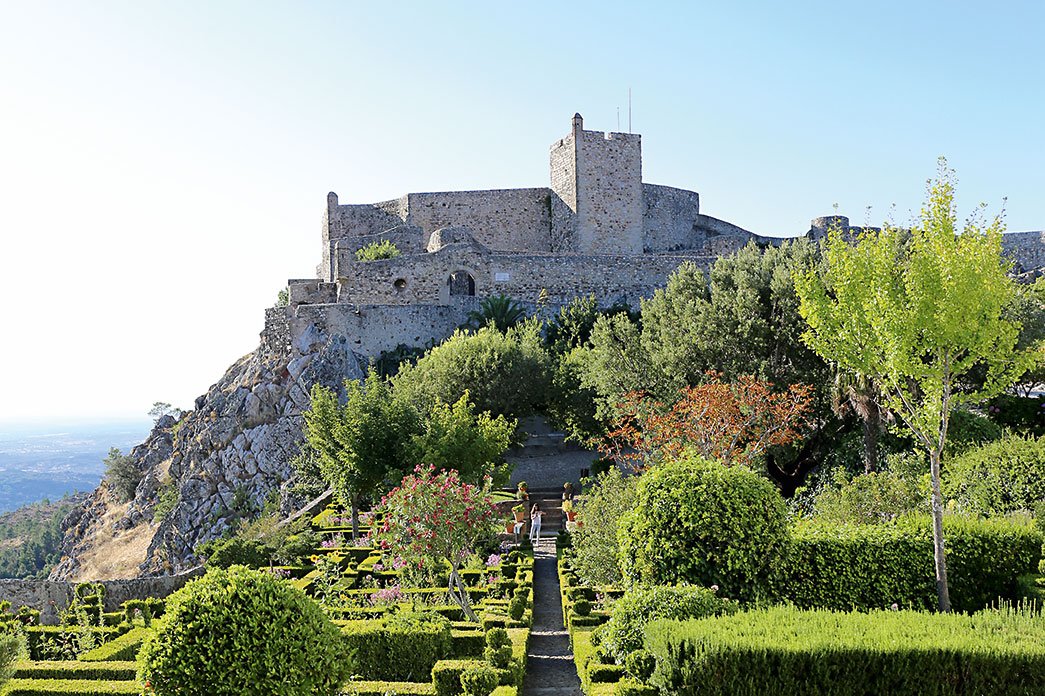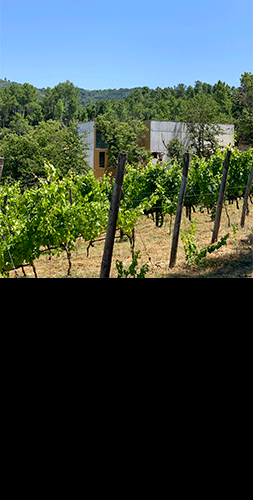As history appeared to be the guiding thread of our journey, we went to Crato - a small town with about 1600 inhabitants. We stopped to rest at the Pousada Mosteiro Crato, in the village of Flor da Rosa, which is about 20 km from Portalegre. The Monastery of Santa Maria provided the scenario for a beautiful and luxurious hotel. The Gothic style and the outline of the building have remained intact, preserving this iconic monument.
And our journey continues. «Oh Elvas, Elvas! Badajoz in Sight». We went to Elvas, where we visited the city walls, the Castle of Elvas and Nossa Senhora da Graça Fort. We wandered through the streets of Elvas, a city, which, from the Middle Ages until the 18th century, served in defence of the border region of Alto Alentejo, at a time when danger was lurking close by, in Spain. The curtain walls and the traditional houses remain and, close by, flows the River Guadiana. We stopped for lunch at the Adega Regional restaurant, which can be found inside the walls. Once we’d finished, we headed up to Nossa Senhora da Graça Fort - also known as Conde de Lippe Fort – which stands a kilometre from the town, in the parish of Alcáçova. From the top of Monte da Graça, the view is breathtaking. The fort, which gained UNESCO World Heritage status in 2012, is a gem to behold. It currently figures on historical routes based on Portuguese heroes. The Fort resisted Spanish troops during the so-called War of the Oranges (1801) and many other invasions.
Having visited this land of legends, we popped over to Badajoz - an easy feat as the Spanish city is about 10 minutes from Elvas. We left the Alto Alentejo Route, but the detour into Extremadura was well worth it. We just visited the Alcazaba of Badajoz - a citadel within the historic centre of Badajoz, surrounded by steep slopes and nature. The city was founded in 892 by Ibne Maruane.
Again, in search of territories rich in history and legends, we arrived at the district of Évora and visited the Castle of Estremoz - built on the hill to the north of the Ossa mountain range. It served in the defence of the Alentejo border. Estremoz is associated with military episodes of the history of Portugal. It was in the castle that Queen Elizabeth of Aragon passed away, in 1336.
We also went to Castelo de Vide – home to the «Andanças» festival. Soaking up its romantic character, its beautiful gardens of unique vegetation, we rested at Póvoa Dam - the second largest reservoir in the district of Portalegre, which lies 5 km from the town. We climbed the long stairway to the Ermida de Nossa Senhora da Penha hermitage - built in the 16th century - in the Serra de São Paulo hills. From the top, views look down onto the town of Castelo de Vide. The building is simple, the chancel round and the interior is lined with tiles.
Making the leap into the district of Castelo Branco, we slowed down in Vila Velha de Rodão - where we found the famous Natural Monument of Portas de Rodão. We visited the Castle of Ródão, entirely surrounded by a charred landscape, due to the flames that pass through this summer, but even that took nothing away from the beauty of the monument. From the top of its walls, the views over the Portas do Rodão - a natural geological monument - and the Tagus Valley are amazing. The Portas do Ródão result from the intersection of the hard quartzite relief of the Serra das Talhadas hills with the current of the River Tagus. We wanted to go a boat trip, and yes, you get a better view on the steep walls, measuring about 170 m high. The two portas (gates) separate, on the one side, Beira Baixa, on the left bank, with Conhal do Arneiro, and, on the right bank, Vilas Ruivas. On the boat trip, if you turn off the engines, you can better appreciate the local birdlife – home to griffon vultures, as well as to black storks and red kites.
Not wanting to leave Alto Alentejo without once again passing through neighbouring lands, such as the city of Cáceres - a feudal city in Spain, the site of historical battles between the Moors and Christians - we went to find out more about this place. Its narrative is reflected in the architecture found in the city - a blend of Romanesque, Arabic, Gothic and Renaissance. It is a beautiful and interesting Roman city, considered the Third Monumental Complex of Europe in 1968 and a UNESCO World Heritage Site in 1986. You will find towers, palaces and stately homes to visit. And you can get lost among the walls of the Plaza Mayor.
Sometimes it is difficult to escape the scheduled route on a given trip and so on the last day we set off across the country towards Comporta beach - about 3 hours from Marvão, where we were delighted by the green rice fields (rice production is one of the activities of the region) and witnessed a magnificent sunset, on the practically deserted, white sandy beach of Herdade da Comporta, on the coast of Comporta, where the land ends and the sea begins.



























